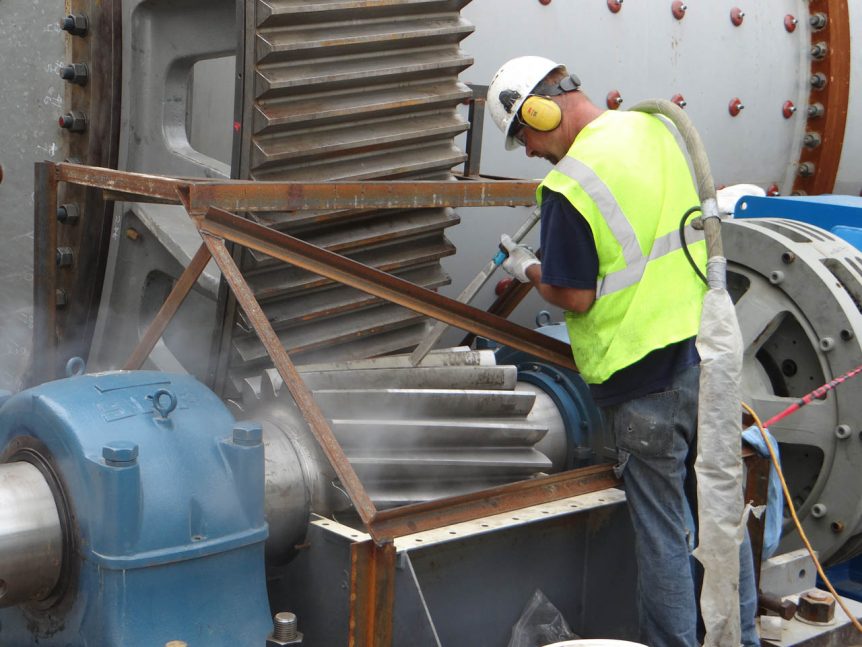Dry ice blasting (also known as CO2 blasting and dry ice cleaning) is a unique industrial cleaning method that uses specialized equipment to mix dry ice (solid carbon dioxide) pellets with compressed air. The compressed air accelerates the dry ice pellets through a blast hose. The pellets exit a blast nozzle near supersonic speeds and impact the surface. Upon impact, the dry ice converts to a gas (sublimation) and the rapid gas expansion of CO2 facilitates the removal of the surface contamination.
Cleaning Mechanism
The cleaning mechanism for dry ice blasting depends on the following factors:
Kinetic Energy
Dry ice is softer and less dense than common blast media. During the dry ice cleaning process, the blast equipment accelerates the pellets close to supersonic speeds. Upon impact, the pellets sublime almost instantaneously and transfer a small amount of energy to the residue or surface. This phenomenon reduces abrasion to the substrate.
Thermal Shock
As the pellets impact the surface and sublime, heat is absorbed from the surface residue. The rapid heat transfer from the top layer of the residue creates temperature gradients within the micro layers of the residue. As a result, micro cracks and fractures form within the residue due to high shear stress. This effect reduces the adhesion of the residue to the surface.
Thermal-Kinetic Effect
Upon sublimation, the carbon dioxide gas expands to a volume nearly 800 times the volume of the original pellet. The rapid gas expansion helps lift and remove the residue from the substrate.

Advantages
Dry ice blasting is non-abrasive, non-flammable, non-conductive, and environmentally friendly. The process does not introduce secondary contaminants and allows cleaning in place which reduces down time. The EPA, FDA and USDA approves dry ice blasting for industry applications.
Applications
Electrical | Facility Equipment | Manufacturing | Power Generation | Real Estate | Restoration |
AC/DC Motors | Conveyors | Plastic Molds | Turbine | Escalators | Fire Restoration |
Electrical Boxes | Conveyor Chains | Industrial Ovens | Substation Isolator | Stairwells | Historic Restoration |
Circuit Breakers | Cooling Fans | Weld Lines | Bushings | Gum Pollution | Mold Remediation |
Forklifts | Foundry Molds | Switch Gear | Building Exteriors | Boat Hulls | |
Fleet Vehicles | Printing Presses | Transformer | Walls | ||
Pipes and Hoses | Resin Removal | Rotor | Ceilings | ||
General Equipment | Tank Cleaning | Armature | Graffiti Removal | ||
Machining Equipment | Field Frame | Parking Garages |
Removal
Dry ice blasting can remove the following surface residues:




